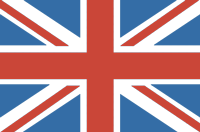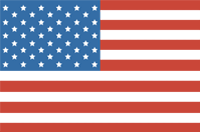King Charles III yesterday delivered the Throne Speech opening Canada’s parliament, something which has not been done by a monarch since 1977. Though his visit is brief, the royal presence in Ottawa is rich with symbolic significance: Prime Minister Mark Carney has made clear that the King is there to give expression to Canadian sovereignty, sending a message to President Donald Trump, who has mused about making the Commonwealth nation into the 51st US state.
Against this threat, Charles’s address — which was written for him by the Canadian government — stressed “national values”, “democracy, pluralism, the rule of law, self-determination”, concluding that “the true north is indeed strong and free.” Even before his journey, the King signalled his support for Canada through gestures of his own: wearing Canadian decorations, sporting the national colours, and planting a maple tree. And judging by the throngs and poll numbers, there is enough popular enthusiasm in evidence to show that the Crown is still appreciated by many Canadians.
Yet there are controversies both within Canada and across the Commonwealth that challenge this narrative. For a start, some may ask how a monarch who lives across the Atlantic can faithfully represent the Canadian state. Left-wing Quebec separatists and, more implicitly, Right-wing Alberta “Republicans” reject the institution as offensively anachronistic and mock the country’s attachment to what the former group refers to derisively as “la monarchie brittanique”.
Indeed, there appears to be a glaring contradiction in celebrating Charles as a Canadian figurehead. After all, the King, acting under the advice of the UK Government, also extended an invitation to Trump for a second state visit to Britain, in which Charles will host and toast the very same president who is menacing his Canadian realm. Earlier this month, Carney saw fit to criticise British Prime Minister Keir Starmer for a supposed lack of sensitivity, amounting to open conflict between two of the Crown’s first ministers. How is the monarchy supposed to function under these strained circumstances?
The answer is that there is not one monarchy but two — or, to be more precise, 15. This is because, contra les indépendantistes, the Canadian Crown is an entirely separate institution from the British one, the result of constitutional evolution across the Commonwealth in which each realm progressively gained more autonomy to the point of eventually becoming sovereign, while still sharing a monarch. Canada played a central role in this push, since it was a 1926 Canadian constitutional crisis that helped to bring about the 1931 Statute of Westminster which formalised the principle of equality between realms. (During the Second World War, Ottawa declared war on Germany one week later than London did, to emphasise Canadian independence.)
Thus, there is no contradiction in Charles doing one thing on Carney’s advice and another on Starmer’s; for His Majesty to obey both would be in accord with the logic of constitutional monarchy, which has lately proven far sounder and more resilient than many other political systems, including that of the perennially unstable republic to Canada’s south. In case of any confusion, the words of Canada’s greatest viceroy, John Buchan, should clarify: “a Canadian’s first loyalty is not to the British Commonwealth of Nations, but to Canada and Canada’s King.”










Join the discussion
Join like minded readers that support our journalism by becoming a paid subscriber
To join the discussion in the comments, become a paid subscriber.
Join like minded readers that support our journalism, read unlimited articles and enjoy other subscriber-only benefits.
Subscribe